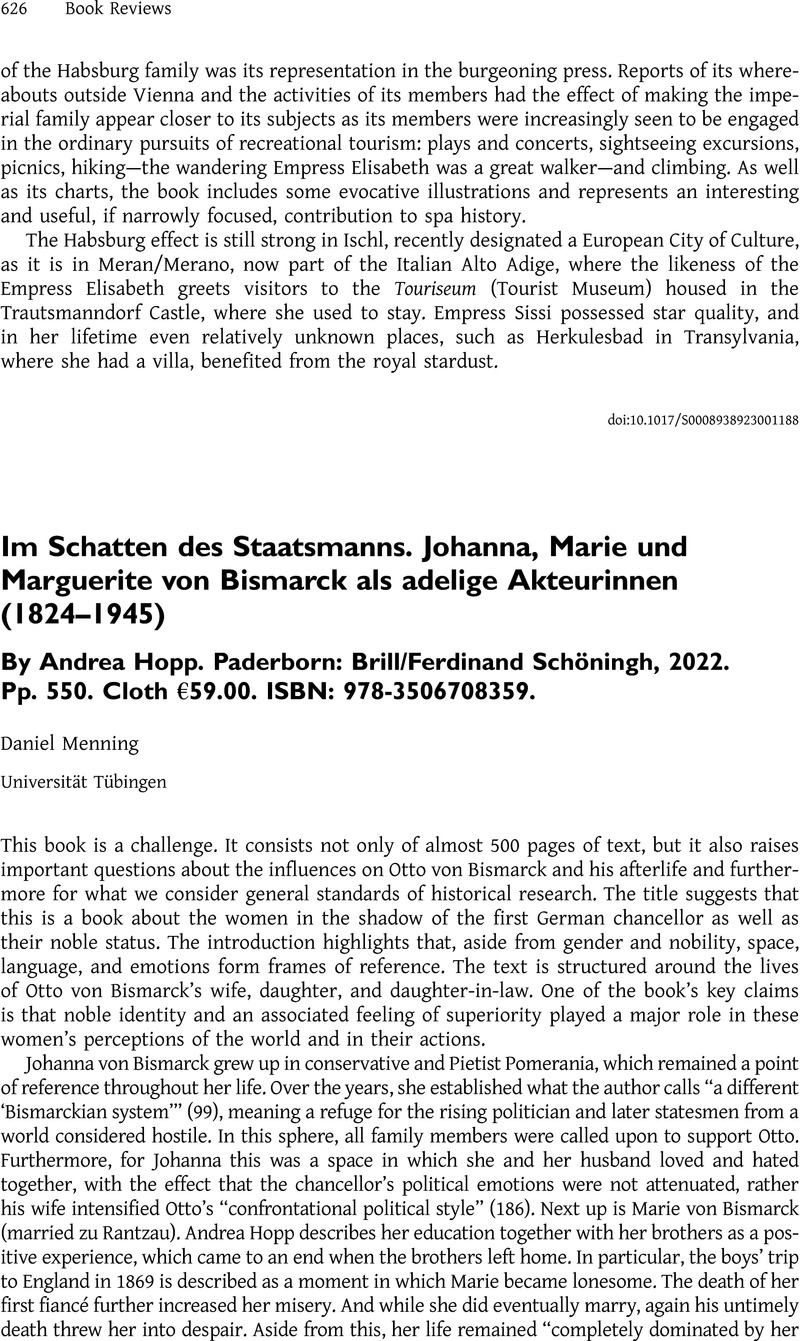No CrossRef data available.
Article contents
Im Schatten des Staatsmanns. Johanna, Marie und Marguerite von Bismarck als adelige Akteurinnen (1824–1945) By Andrea Hopp. Paderborn: Brill/Ferdinand Schöningh, 2022. Pp. 550. Cloth €59.00. ISBN: 978-3506708359.
Review products
Im Schatten des Staatsmanns. Johanna, Marie und Marguerite von Bismarck als adelige Akteurinnen (1824–1945) By Andrea Hopp. Paderborn: Brill/Ferdinand Schöningh, 2022. Pp. 550. Cloth €59.00. ISBN: 978-3506708359.
Published online by Cambridge University Press: 28 December 2023
Abstract
An abstract is not available for this content so a preview has been provided. Please use the Get access link above for information on how to access this content.

- Type
- Book Review
- Information
- Copyright
- Copyright © The Author(s), 2023. Published by Cambridge University Press on behalf of Central European History Society of the American Historical Association


